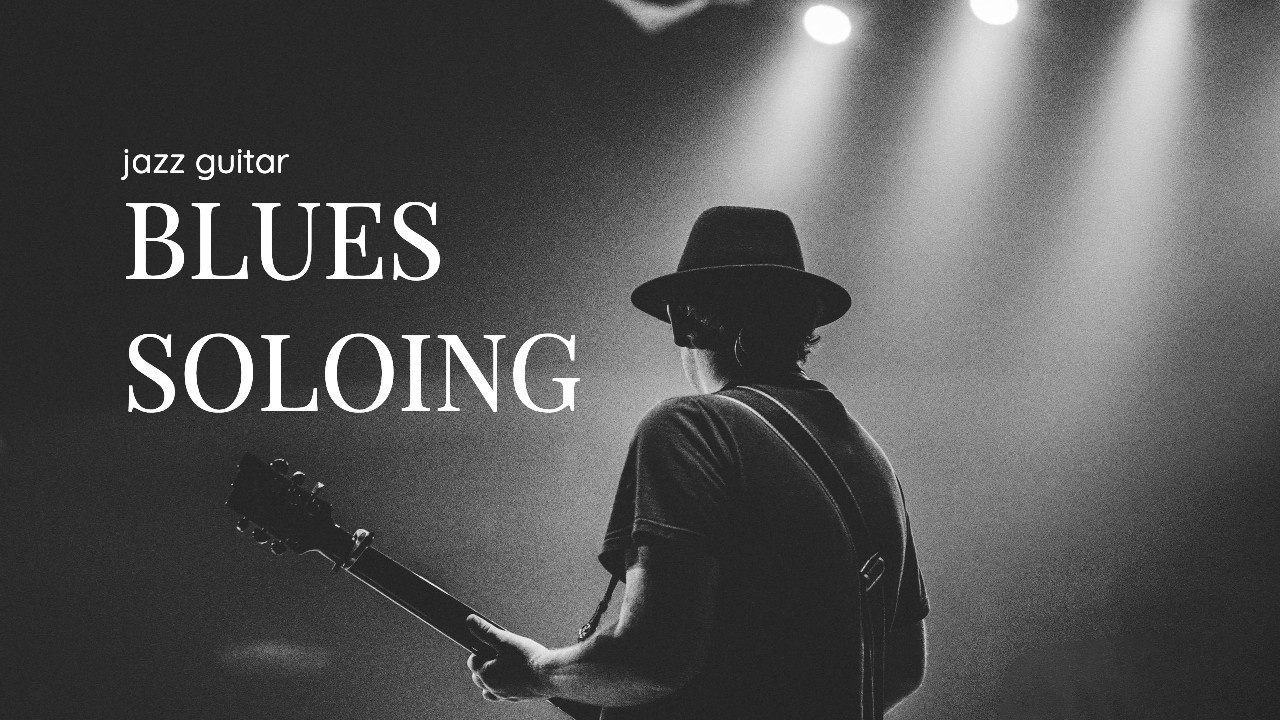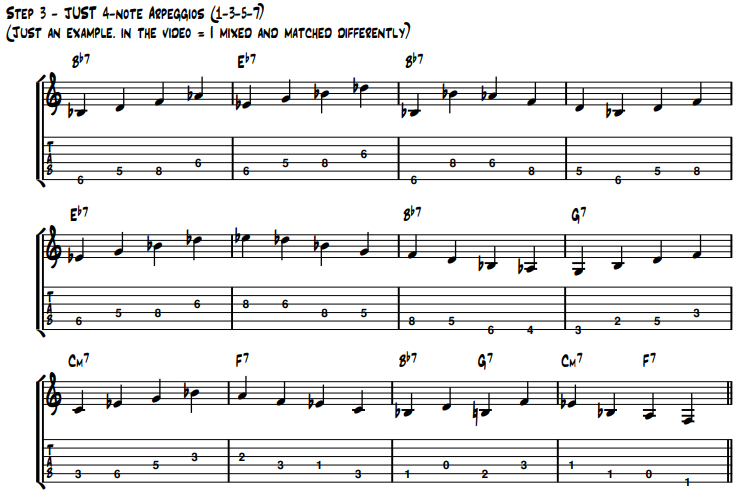
How to Improvise on Jazz Blues for Guitar
Aug 19, 2021
Five Components for Soloing on a Jazz Blues
The ability to improvise over jazz blues is crucial to anyone looking to progress as a jazz guitarist. In truth, it's not all that different from soloing over a good old 12-bar blues with 3 chords, we're just adding a few chords to set up the changes in the progression.
In this video/PDF lesson, we'll focus on the jazz side of blues improvisation. We'll play using a mix of pentatonics, modes, arpeggios, and more.
How-to Improvise Jazz Guitar Blues: 5 Basic Concepts
Learn these 5 basic concepts to practice improvising over a jazz blues progression on guitar!
- "Regular" Blues Scale - Minor
- Major Blues Scale
- 7th Arpeggios to Jazz Up Your Blues
- Strictly Guide-Tones
- Applying Scales with More Notes
Let's go ahead and break these down in more detail.
Sheet Music: Jazz Guitar Blues Improvisation (PDF for Download)
For your reference, here is the downloadable PDF that accompanies the video with everything you'll need to follow along.
Here's the accompanying PDF:
Click to download your "Jazz Guitar Blues: Improvisation" PDF!
Join our Community here.
Step 1: "Regular" Blues Scale - Minor
In this first step, we'll use the typical minor blues scale. This is the basic blues/rock sound we're all used to hearing on countless recordings.
This is basically just a simple pentatonic scale with an added b5 for a bit of chromaticism.

You've seen it before, the famous shuffle blues in the key of A where you set your hand to the 5th position on the fretboard for soloing. ;)
@ 1:30 in the video above
Step 2: The Major Blues Scale
Next up, we have the so-called major blues scale. Some might say this has a sort of country flavor to it.
Same concept as before. It's just another pentatonic scale with an added note.

In the video, I go a bit more into detail.
Basically, in order to play the Bb major blues scale, you simply need to think of G minor blues. Easy breezy.
@ 2:20 in the video above
Step 3: Jazz Guitar Arpeggios for Blues
It is crucial for any jazz guitarist to be able to play 7th arpeggios through the form of a blues. Really, this step is crucial when working on improvising over any tune.

All you're doing here is playing the basic 7th arpeggios (1-3-5-7) over all of the chords in a jazz blues progression and making sure you're doing your best to voice-lead the transitions smoothly. This can be kind of tricky at first, but you'll see how this will make you a way better improviser in the long run.
@ 3:45 in the video above
Step 4: Hitting the Guide-Tones
Being able to hit the guide-tones on a set of changes is a must-have for any jazz guitarist.

The guide-tones, also known as the 3rds and 7ths of a given chord, really help to make the changes heard in your soloing. Entire solos can be built around taking guide tones and using different ornamentation techniques like neighbor-tones and other chromatic concepts to make them into flowing lines.
@ 5:48 in the video above
Step 5: Scales for Jazz Blues
And finally, in steps 5.1, 5.2, and 5.3, we'll use diatonic 7-note scales for the purpose of soloing. These are great exercises for developing your rhythmic confidence during solos, especially with 8th notes.
Be patient. It takes a while to build your technique, time, and sound. You'll be glad you took the time when you finally get it. I promise!
The image for this would have been rather large, but you can find all of this in the PDF here.
@ 8:30 in the video above
Click to download your "Jazz Guitar Blues: Improvisation" PDF!
Join our Community here.
Further Practice: Jazz Blues Improv
Remember, these are only practice strategies for jazz blues improvisation on the guitar. You would never actually play like this at a jam session!
The idea here is to do all of your practice and preparation at home or in the practice room, and when you are on the bandstand, let go! This lesson here deals with the former.
For more resources on jazz blues for guitar, see the blues "master index" for all blues-related pages on this website.
BONUS: More Jazz Blues Guitar
In this more recent video, we discuss alternating between your major and minor blues scales more in-depth. In fact, this is a bit of a how-to for steps 1 and 2 listed above.
It's simple! You probably already know the minor blues scale, but in case you forgot it, here's a reminder. I've provided the two scales between which you will be switching for this exercise.


In the first four bars, we have an I chord which then goes to the IV for two bars. Then, it comes back to the I chord which leads us to the turnaround in the last four bars. Nothing too crazy, right?
Over the first four bars, we're going to use the Bb major / G minor blues. Then, over the last 8 bars, we will use Bb minor blues. THAT'S IT.
Idiomatic Bluesings
A very popular concept in all blues playing is to play the #9 (or b3) of the chord and bend or slide into the 3rd. So, for example, against a Bb7 chord, you could play Db and bend or slide it into D.
Try it for yourself and you'll see just how prevalent this neat little trick is in blues playing!
Here are some examples of how you can approach this over Bb7 and Eb7. I've highlighted the #9 to 3 transition in both.
Over Bb7

Over Eb7

Conclusion
Being able to handle a jazz blues in all keys is an important skill for any jazz guitarist to master. Take your time with it and really dig in.
As always, feel free to leave your comments and/or questions below. Good luck!









